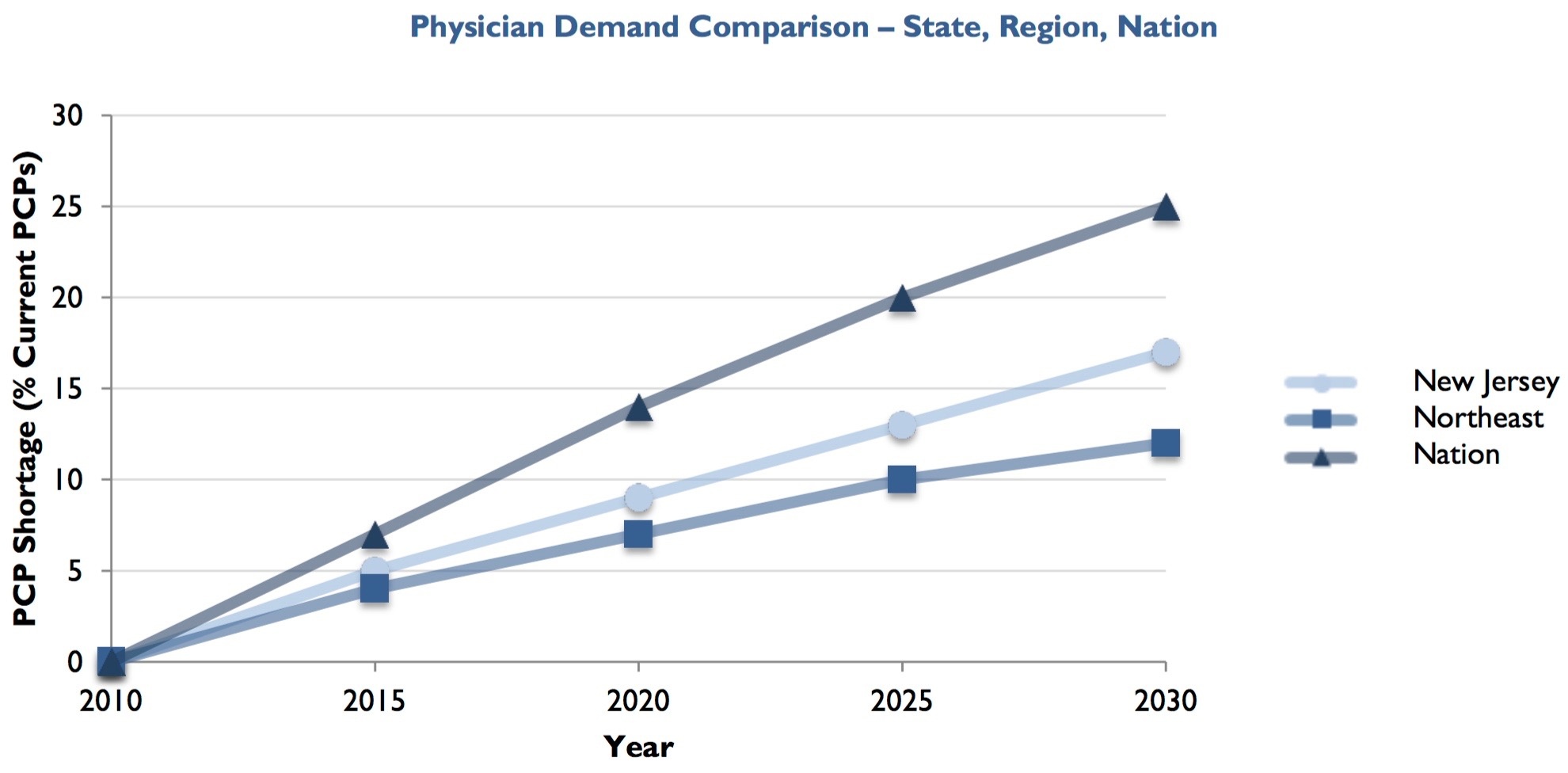In the previous blog post I detailed the current state of primary care in Pennsylvania and how the demand for primary care physicians is surpassing supply, leading to worry amongst government regulators and healthcare professionals. In New Jersey; however, the demand is even steeper.
Currently, the demand for primary care physicians in New Jersey is higher than the demand in the Northeast but lower than the demand in the U.S. overall. In the previous blog post I wrote how Pennsylvania will need an additional 1,039 primary care physicians by 2030, which is an 11% increase compared to the state’s current workforce. New Jersey, on the other hand, will need an additional 1,116 primary care physicians by 2030, which is a 17% increase compared to the state's current workforce. Primary care physicians, as evidenced by the graph below, will be in higher demand in New Jersey than in Pennsylvania for the upcoming years.
Pressures from a growing, aging, increasingly insured population call on New Jersey to address the growing demand for primary care physicians to adequately meet health care needs.
The graph below shows the increased demand for primary care physicians by 2030 due to three factors: an aging population, a growing population, and the pressures felt from an increasing number of insured Americans due to the Affordable Care Act.
By 2020, with the number of older and insured Americans increasing, there will be a demand for 611 additional primary care physicians in New Jersey. By 2030, the number will nearly double, creating a demand for an additional 1,116 primary care physicians.
Why is the demand for primary care physicians outpacing supply? Find out here.
The Solution
To solve this primary care crisis in the United States, doctors and patients are switching to an alternative model that completely eliminates insurance and therefore, all of the problems associated with the traditional primary care payment model. This new model is called direct primary care.
Direct Primary Care
In this alternative model, patients pay their doctor directly, rather than through their insurance company. This means that patients pay a pre-defined monthly fee directly to their doctor instead of paying insurance premiums and co-pays. Basically, direct primary care cuts out the middle man and ultimately saves patients money. The cost of care is reduced to the point where the average American can once again afford to see a physician on a regular basis. Insurance isn’t necessary within this relationship because the care is affordable. Actually, keeping insurance out is what makes this relationship functional and affordable.
Is Direct Primary Care Right For You?
For those interested, the doctors at Total Access Medical will meet with you for free to discuss more about direct primary care and it’s many benefits.









